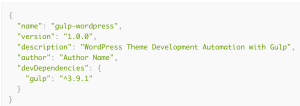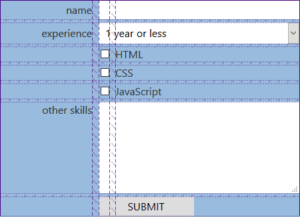CrashShop, a Seattle-based Web design firm was founded on January 1st, 2000 — just three month before the huge NASDAQ crash. "But," notes found Tony Jacobsen, "it’s turned out pretty well. We’ve been eating and paying bills for almost 2 years now!"
Indeed, the firm’s client list includes such high-profile names as: American Cancer Society, Bill & Melinda Gates Foundation, Microsoft, US Department of Energy, and Adobe. So how did they do it?
From Small Beginnings…
Currently the firm has five full-time employees. Initially, each was a freelancer who had his or her own independent clients. All five started their freelancing careers between 1995 and 1998, so they each had a lot of experience under their belts. "We were all meeting for coffee on a weekly basis, kind of like freelancers unite–and discussing clients, projects, design, and technology," Tony explains.
Out of those meetings, the idea surfaced that it’d be cool if the group had a loft space that they could all work out of, which would also allow then to feed of off each other creatively.
"The more we discussed the idea," Tony says, "the more it started turning into the idea of just starting a company. Being a one-person operation seemed to limit each of us from getting the bigger, more complex projects."
As soon as a loft space was chosen, each of the company founders began to tell their clients about the new development. "We each told our current and past clients that we had started a new design and technology firm," Tony explains. "We basically told them ‘it’s the same great ‘me’, but with the strength, power, and expertise of 4 others backing up the work you’ve come to know and love.’"
And, because of the additional business overhead, and the increased capabilities each ‘individual’ could now offer their respective clients, they also increased their rates.
The Secret of Success
Once the company started, they had to have a lot of meetings and discussions about how things were going to be run. They decided to reject any project under $6000 USD. "There’s an odd thing about projects with small budgets," notes Tony. "They seem to always take just as long, and end up being more work than projects with big budgets."
This approach worked in the busines’s favour. Says Tony, "The first official client of CrashShop was The Bill & Melinda Gates Foundation. That project came through a word-of-mouth contact."
In fact, the vast majority of the company’s business has come through word-of-mouth. "We invest heavily in going to lunch, coffee, or drinks with people. Anything that facilitates word-of-mouth contact," Tony reveals. "Almost every job we’ve done has come from word-of-mouth. It’s how things get done in the world.
"One thing that has been an advantage is that we each had been working in the industry for several years and weren’t starting out cold. We had a good deal of individual inertia when we started CrashShop."
One company member, Jason Hickner, actually has the design of a frontpage as an exhibit in the San Francisco Museum of Modern Art. "When Netscape 4 launched, it opened up the whole world of DHTML. Jason jumped on this right away, and had the 3rd DHTML site in existence," Tony says.
"The site Jason created received 50,000 visitors in its first weekend online. At that time, the Museum of Modern Art was creating a Website exhibit to capture what was going on with the Internet, and Jason’s site was selected to be included in the exhibit."
A Different Approach to Selling
One big lesson that the group learned early on was that just because a client might send out a Request for Proposals for a Web design project, didn’t mean they necessarily knew what they needed. "We’ve often created a proposal as a response to an RFP and sidestepped the hoop-jumping exercise that they’ve asked us to respond to. In that proposal we outline what we think is the best thing to do and what would best suit their scenario," Tony explains.
"We will of course call the client and ask any necessary questions, or have a meeting to inquire about the nature of various aspects of the project or their company. It’s important not to forget that you are the expert–not the client. That’s why they’re hiring you."
As for the big names clients on CrashShop’s list, why would they need to outsource? Tony explains. "Having personally worked inside of a large corporations before I am often amazed that a corporation can get anything done at all!
"When a large company outsources a project, they’re usually able to benefit from knowing how long things are going to take, and how much that work will cost them. It would be scary to have an A/B comparison of an internal design team doing an identical project to an outside design team."
And as for getting these projects? "My advice is: don’t burn bridges! All our "big client" jobs have come from people we used to work with, who are now working a big corporations, or someone we know who gets a new job at a big corporation," advises Tony.
Making the Pitch
Currently the company closes the deal with 2/3 of the proposals it writes. At the first meeting, a lot of screening questions are asked such as:
- When do you plan to launch this project?
- What kind of budget are you planning on?
- What kind of response are you seeing initially to your product/service/concept, etc.?
"Those questions help screen out the jokers and yahoos," notes Tony.
"After we’ve learned about the client, their history and the project sufficiently, we put together a rough draft proposal without numbers. This allows us to do a quick walk-through with the client to make sure that all of us are on the same page. Inevitably we find discrepancies in the planned deliverables.
"We feel this is very important — we think a lot of firms out there are just throwing together a proposal and rushing into the project without ever making sure that they’re doing the exact work the client wants from them.
"After that rough draft proposal we make the edits based on client feedback and then send over a final proposal with dollar figures attached," Tony says.
And his tips for creating a winning proposal? "Basically, it boils down to asking a lot of questions, listening to the answers, and facilitating a relationship via in-person meetings. We never quote projects over the phone."
Not surprisingly, the company is doing pretty well financially. "We’re not millionaires or anything but we are eating, paying our bills, and occasionally having a nice little chunk of cash to do something cool with," says Tony.
His final words of advice: "Be sure to set aside at least 25% for taxes."
Action Items
Implement the secrets of Ton’y success in your own operations:
- Personal relationships are the key to success.
Take everyone you know out to lunch or coffee and tell them what you’re doing. ("I’ve started my own Web design company…" etc.).
Talk to them about what they’re doing, and let them know thatif they run across anyone they know that needs what you’re selling, to tell them about your business. Give them some of your business cards.
- Small projects can take just as much time as bigger ones.
Don’t force yourself into accepting petty work when you could be focusing your energies on larger, more profitable clients.
- In the first draft of the proposal, outline the deliverables–but don’t include prices.
Only after all differenecs have been worked out as to what needs to be done, provide your final proposal with prices.
- Don’t have enough money to hire employees and fund the first few months of expenses out of your own pocket?
Join other freelancers in your city and share an office so you have a professional work-space, and you can bounce ideas of off each other. If it works out, start a company together.
 Matt Mickiewicz
Matt MickiewiczMatt is the co-founder of SitePoint, 99designs and Flippa. He lives in Vancouver, Canada.



